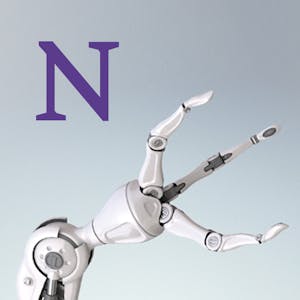Embark on a journey into the intricate world of robotics with the "Modern Robotics, Course 2: Robot Kinematics." This comprehensive course delves into the fundamental mathematical modeling techniques crucial for understanding how robots operate. Through this specialization, you will gain the essential knowledge and skills needed to pursue a career in robotics or advanced studies in the field.
Throughout the six short courses comprising this specialization, you will explore various aspects of robot kinematics, with Course 2 focusing on Robot Kinematics. The course covers topics such as forward kinematics, velocity kinematics and statics, inverse kinematics, and kinematics of robots with closed chains. You will leverage the product-of-exponentials formula to solve forward kinematics, understand the relationship between joint velocities and forces/torques, and learn to calculate joint values for achieving desired hand configurations.
Utilizing the textbook "Modern Robotics: Mechanics, Planning, and Control" by Lynch and Park, and a library of robotics software in Python, Mathematica, or MATLAB, you will delve into practical applications and utilize the free cross-platform robot simulator V-REP. This enables you to work with state-of-the-art robots and gain hands-on experience in the comfort of your own space, without any financial investment.
Certificate Available ✔
Get Started / More Info
The course modules in "Modern Robotics, Course 2: Robot Kinematics" cover forward kinematics, velocity kinematics and statics, inverse kinematics, and kinematics of closed chains, offering a comprehensive exploration of essential robotic concepts and techniques.
Chapter 4: Forward Kinematics delves into the calculation of the configuration of the robot's "hand" based on the joint values using the product-of-exponentials formula. This module also encompasses lecture comprehension and practical applications to reinforce the learning.
Chapter 5: Velocity Kinematics and Statics introduces the space and body Jacobians, singularities, and manipulability, providing insights into the relationship between joint velocities and forces/torques to end-effector twists and wrenches. The module also addresses practical issues and the columns of the Jacobian matrix.
Chapter 6: Inverse Kinematics focuses on calculating joint values to achieve a desired "hand" configuration, covering numerical inverse kinematics and practical issues. The module also includes a project to apply the learned concepts in a real-world scenario.
Chapter 7: Kinematics of Closed Chains explores the kinematics of closed chains, including lecture comprehension and common closed chains, offering a comprehensive understanding of this aspect of robot kinematics.
Autodesk CAD/CAM/CAE for Mechanical Engineering is a specialization that teaches the foundations of applying computer-aided design (CAD), computer-aided engineering...
3D Model Creation with Autodesk Fusion 360 offers a comprehensive exploration of the design and manufacturing process, focusing on 3D modeling using Autodesk Fusion...
Intro to Acoustics (Part 1) provides an in-depth exploration of acoustics, focusing on the concept of impedance. Students will gain a comprehensive understanding...
Shape and Property Control of Metals I & II introduces students to shaping materials and their impact on properties and structure.